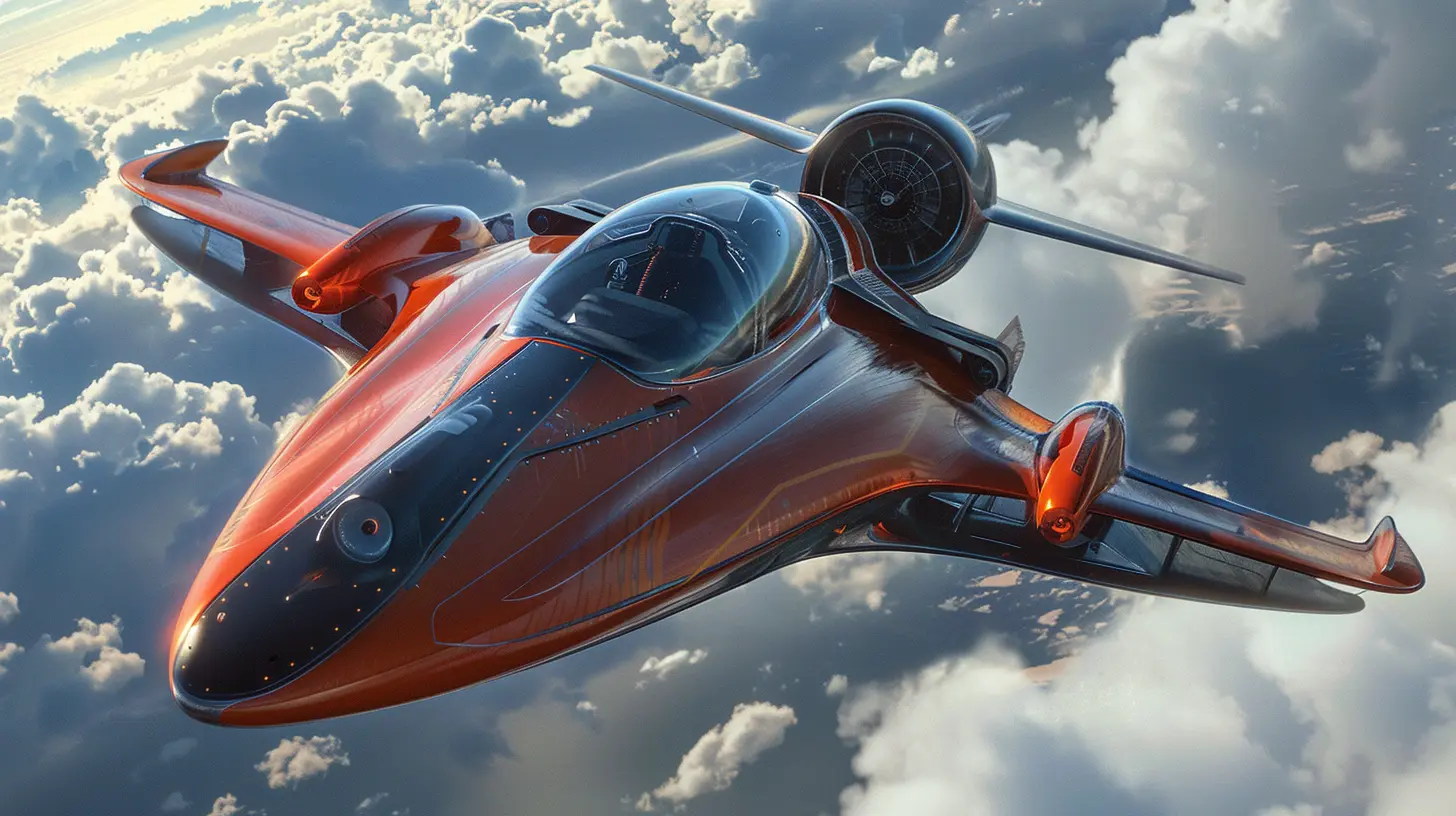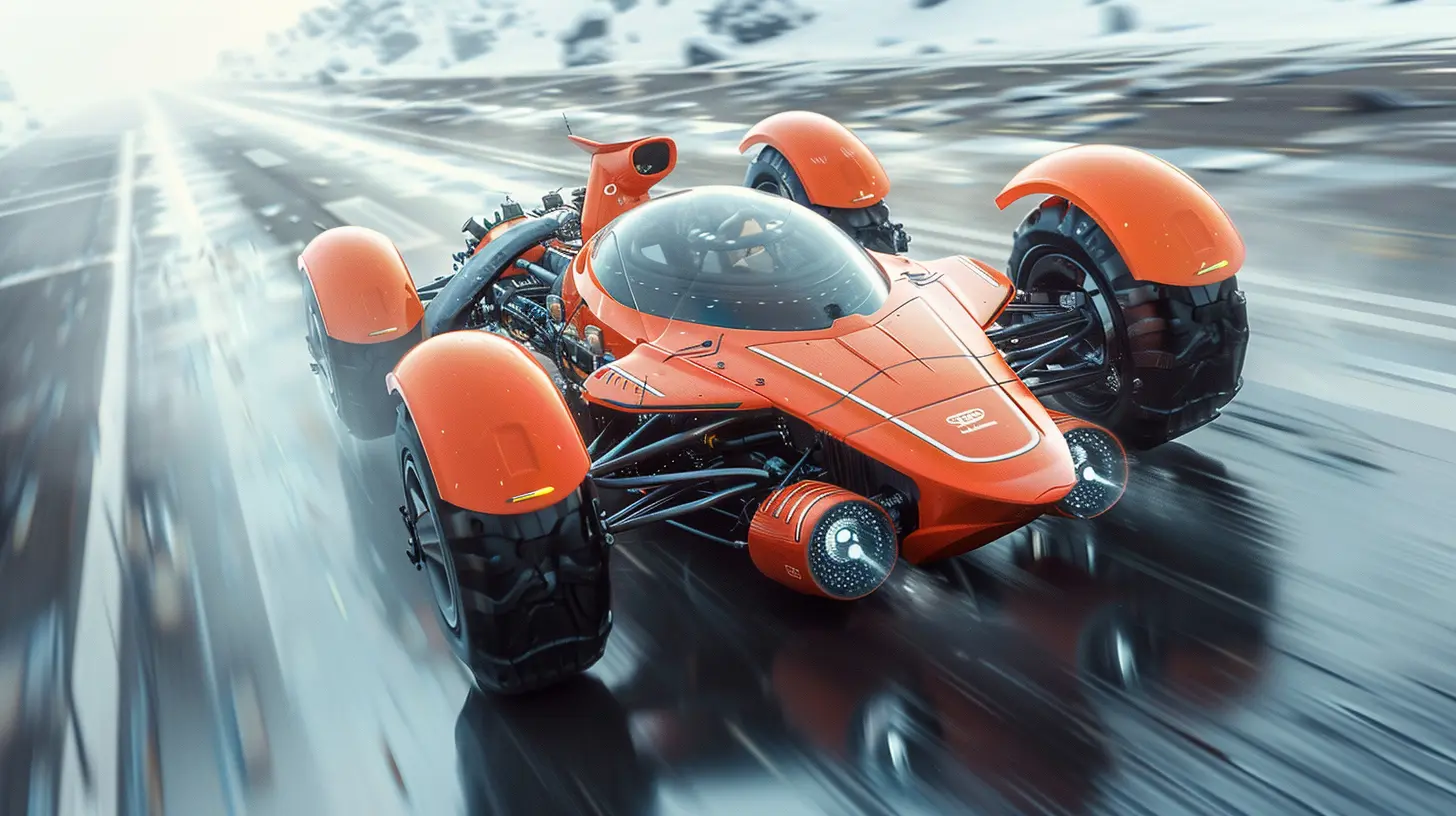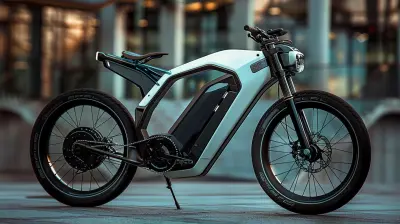Racing Drones: A Thrill-Seeker’s Guide to High-Speed Flying
23 November 2025
Imagine this: you're wearing a pair of goggles, your thumbs are twitching on a remote controller, and your heart is pounding as you zip through abandoned buildings, twist around trees, and slice the wind at over 100 mph—all without leaving the ground. Welcome to the adrenaline-charged world of racing drones.
If you’ve ever wanted to feel like a fighter pilot or experience the rush of piloting a spaceship through an asteroid field, drone racing might be your jam. But before you strap in and put on those First-Person View (FPV) goggles, there’s a whole lot you need to know. Let's dive into the fast-paced, high-flying, and often misunderstood world of racing drones.
What Are Racing Drones, Anyway?
First things first—what exactly is a racing drone?A racing drone is a small, agile, and ultra-fast quadcopter specifically designed for high-speed flight and tight, precise maneuvering. Unlike your casual camera drones like the DJI Mavic, these bad boys are built for one thing only: speed. Most racing drones are custom-built, lightweight, and equipped with FPV systems that transmit live video feeds straight to the pilot’s goggles. This gives you a cockpit-like view of what the drone “sees.”
They’re not about capturing majestic sunsets or cinematic landscapes. Nope. Racing drones are engineered for competition, agility, and raw performance.
Why Is Drone Racing So Addictive?
Ever wonder why people get so hooked on drone racing? It’s the perfect storm of skill, thrill, and tech. Here’s why it’s so captivating:- That FPV Experience: Think of it like virtual reality but real. When you’re flying through the goggles, it feels like you’re inside the drone.
- Adrenaline Rush: With speeds often exceeding 100 mph, your reflexes are constantly tested.
- Tech Tinkering: Love gadgets? Racing drones are a dream for DIYers. You can build, mod, and upgrade to your heart’s content.
- Community Vibes: Drone racing has a tight-knit, passionate global community. Competitions, meetups, and online forums all create a sense of camaraderie.
It’s like combining the mechanical obsession of RC cars, the thrill of video games, and the freedom of flying—all in one epic hobby.
Key Components of a Racing Drone
Not all drones are created equal, especially when it comes to racing. These machines are like Formula 1 cars—finessed to perfection. Here’s a breakdown of what makes up a racing drone:1. The Frame
This is the skeleton of your drone. Racing drone frames are typically made from carbon fiber—it's light, durable, and strong enough to survive a few crashes (and trust me, there’ll be crashes).2. Motors
Brushless motors are the gold standard here. They offer the power you need to shoot through courses at insane speeds.3. Electronic Speed Controllers (ESCs)
Think of these as the middlemen between your flight controller and motors. ESCs regulate the power going to each motor, allowing for smooth, responsive control.4. Flight Controller
This is the brain of the operation. It reads your inputs and adjusts the motors accordingly. You can flash different firmware like Betaflight to fine-tune performance.5. FPV Camera & Video Transmitter
The tiny camera mounted on the drone sends live footage to your FPV goggles via a video transmitter (VTX). It’s your eyes in the sky.6. Propellers
They may look simple, but props dramatically affect flight performance. Three-blade props are popular for the balance of speed and control.7. Battery (LiPo)
Most racers use high-discharge Lithium-Polymer batteries. These pack a punch but require careful handling—they're powerful but volatile.
FPV Goggles: Your Window to the Race World
Flying line-of-sight is okay, but FPV (First Person View) is where the real magic happens. You slip on a pair of FPV goggles and suddenly you’re inside the drone, dodging obstacles and carving through air like a sci-fi pilot.Goggles come in two main flavors:
- Box Goggles: Bulkier, but great for beginners with a larger screen.
- Slimline Goggles: Compact and immersive, ideal for serious racers.
Most use analog video signals (low latency is critical), but HD systems like DJI’s FPV combo are gaining popularity.
Racing Drone vs. Freestyle Drone
Quick sidebar: Not all fast drones are "racers." There’s also freestyle flying, which is more about flips, rolls, and cool tricks than outright speed.- Racing: Speed-focused, tight turns, structured courses.
- Freestyle: Artistic, flowy maneuvers, open environments.
Of course, plenty of pilots do both—but know the difference when picking your gear.
How to Get Started in Drone Racing
Alright—so you’re sold on the thrill. But how do you actually get started without crashing and burning (literally)?Step 1: Begin with a Simulator
Before burning through props and cash, download a drone racing simulator. Pilots swear by ones like:- Velocidrone
- DRL Simulator
- Liftoff
These sims offer realistic physics, and let you practice until your fingers and brain are in sync.
Step 2: Buy a Starter Racing Kit
Look for beginner-friendly kits with ready-to-fly (RTF) drones. Brands like EMAX, BetaFPV, and iFlight offer affordable gateways into FPV.Start small—2–3 inch quadcopters (like Tiny Whoops) are perfect for indoor flying and honing skills.
Step 3: Join a Community
Find local or online FPV groups. Facebook, Reddit, forums, and even Discord servers are filled with helpful pilots who love to share tips and help newbies. You’ll fly better and learn faster.Step 4: Practice, Crash, Repeat
Don’t be afraid of crashes—they're part of the game. Every pro pilot has a graveyard of broken frames and scorched ESCs. Learn from every crash.The Racing Scene: From Backyard Tracks to Global Championships
Drone racing has grown from backyard pastimes to full-blown international tournaments. Here's a look at the racing ecosystem:Local Races
Start local. Park meets, school gyms, even parking garages can turn into epic tracks. Look for community groups or events on MultiGP.Official Leagues
- MultiGP – A grassroots organization with chapters worldwide.- Drone Racing League (DRL) – Hyper-competitive, often televised, and packed with elite-level pilots.
- Federation Aeronautique Internationale (FAI) – Think Olympics of drone racing.
Race Formats
Tracks are marked by gates, flags, and obstacles. You’re timed from takeoff to landing (or crash). Precision counts just as much as speed.Building vs. Buying: Which Route Should You Take?
There’s a big debate in the FPV world—is it better to build your own racing drone or buy one preassembled?Building Pros:
- Full customization- Learn how everything works
- Easier to repair
Buying Pros:
- Faster learning curve- No soldering or technical setup
- Less intimidating for beginners
If you’re the hands-on type and love tinkering, build your own. But if you just want to fly ASAP, grab a pre-built kit and hit the skies.
Safety First, Speed Second
Let’s be honest—racing drones can be dangerous. Those spinning props are basically mini chainsaws, and a fast quad can hurt someone (or worse) if mishandled.Here are some golden rules:
- Always fly in designated areas.
- Wear protective gear (especially when flying indoors).
- Keep bystanders at a safe distance.
- Know your local drone laws and register if needed.
- Arm your drone only when you’re ready to fly.
Flying fast is fun—but only if everyone stays safe.
Maintenance & Troubleshooting
Racing drones are like sports cars: fast, powerful, and needy. You’ll be spending a lot of time tuning, soldering, and fiddling.Some common maintenance tasks include:
- Tightening frame screws
- Replacing props
- Checking motor health
- Updating firmware
- Calibrating ESCs and flight controllers
And when something goes wrong (and it will), forums and YouTube tutorials are your best friends.
The Cost of Going Fast
Let’s talk numbers. How much does it cost to get into drone racing?Beginner Setup:
- RTF Drone Kit + FPV Goggles: $200–$400- LiPo Batteries + Charger: $50–$100
- Tools and Spare Parts: $30–$100
- Simulator (Optional): $20–$30
So, you can realistically get into drone racing for under $500. Not cheap—but for a hobby that mixes gaming, engineering, and flying, it's a solid deal.
Final Thoughts: Is Drone Racing Right for You?
If you crave adrenaline, love gadgets, and don’t mind a learning curve, drone racing is one of the most rewarding hobbies out there. It’s part sport, part art, part tech playground.Sure, it takes time to master, and you’ll probably crash more than you fly at first. But once you get the hang of it, the sky’s no longer the limit—it’s your playground.
So pull on those FPV goggles, power up those motors, and get ready to race like your thumbs depend on it. High-speed flying has never felt so real.
all images in this post were generated using AI tools
Category:
DronesAuthor:

Vincent Hubbard

